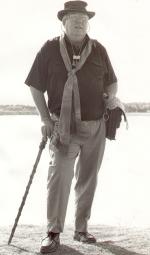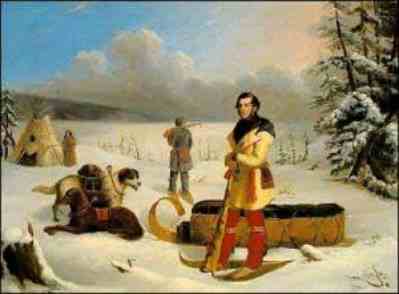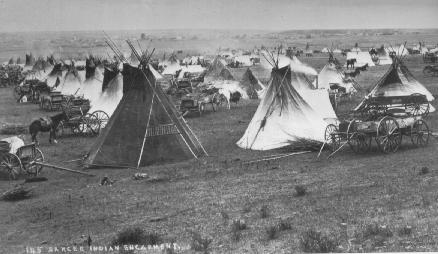 Galloping Geezer
Galloping Geezer


 Jack Downey Comments on Canadian Issues to Inform and Amuse.
Jack Downey Comments on Canadian Issues to Inform and Amuse.
Music drumming produced using
PC Drummer.com
"Drum all day long!"
Photo Credit to Julie Ann Biggs out on the Mekong River, Cambodia Vietnam Border.".
 Of "Real White Men", Holy Ground, and… Kootisaw?
Of "Real White Men", Holy Ground, and… Kootisaw?
The 'European' first known to have seen the Canadian Rocky Mountains was an English convicted smuggler representing the Hudson Bay Company (HBC). In 1754 Anthony Henday visited what was probably a Blackfoot camp in the Red Deer valley, close to what is now the city of Red Deer. Four lane Highway #2 goes over a large hill just South of Red Deer and one can stop at the present day Rest Stop and see the grand vista of the prairies and foothills framing the Rocky Mountains. It is a very worthwhile historic site to visit, especially if there is a 'Chinook Arch' of clouds as a half halo above the shinning mountains. The crisp clean air telescopes the mountains in so that you feel you can reach out and touch them even though they are 60 miles to the west. One must wonder at Henday's thoughts as he peered to the west at the land dotted with great herds of buffalo.
It is thought that some French Canadian trappers may have preceded Henday into Rupert's Land, but there are no written reports of their passing amongst the Native Canadians, except that the Blackfoot word to this day for "Frenchmen" is "The Real White Men." There are no other records that can confirm these contacts. If the French Canadians had settled the foothills then Alberta would be a Francophone Province and the present day inhabitants could be spending their time having referenda on separation and demanding more money from Ottawa.
Anthony Henday tried to convince the Alberta First Nations to trade directly down the rivers to York Factory on Hudson Bay. These natives, however, had no canoe traditions and rejected Henday's idea after finding other tribes (Cree, Assiniboine) encountered on the river routes hostile.
It would not be until thirty-three years after Henday's visit that an HBC post was established at Rocky Mountain House west of Red Deer, by David Thompson. This historic site is on another excellent, low traffic, scenic and well paved North South Highway, well worth the trip for modern day adventurers.

Note Pack Dogs and Toboggan and small Teepee
The arrival of the horse changed things. A horse could carry eight times as much as a dog and travel twice as far per day. Using the travois of Lodge pole pine (Alberta's provincial tree), much larger Teepees could be transported, allowing the Natives to follow the buffalo herds as their seasonal migration routes ebbed and flowed.
Painting "the Surveyor " by Paul Kane 1855 curtsey of The Glenbow Foundation.
David Thompson wintered along the Bow River at or near the present site of Calgary. This was a prime hunting and many artifacts have been found there by University of Calgary archaeologists. A huge number of buffalo bones can be found working out of the Glenmore Water Reservoir embankment, just to the west of Rockyview Hospital. The area appears to have been the heartland of the Peigan Tribe. To the south of Calgary at Dewinton, a spring gushes forth from the hill side near three small Glacial erratics (stones dropped by glaciers) which are on holy ground to this day called the "Three Wise Men". Near Okotoks is the largest Glacial Erratic in North America. One can find corners of this mammoth stone rubbed to the smoothness of glass by countless buffalo grooming their spring coats as winter fur was shed. On a southwest corner, low ledge glyphs can be seen and in a camp slot in the rock's northeast corner one can still see smears of red ochre and soot stains from buffalo chip fires of long ago. The 'Big Rock' (we have a brewery by that name) was a major meeting place for groups gathering to prepare for the Buffalo Jump over the sandstone cliffs west of Cayley in Squaw Coulee (Squaw means "Woman" and is not a derogatory term). A Buffalo corral was used for many years just to the west in what was called Happy Valley. Now it is a Tourist trailer park and wedding rental hall. South in High River, a Calgary bedroom community, there was a "Medicine Tree" which the Natives used as a shrine. Two huge popular trees grew together by one branch actually growing into the other tree forming a large 'H'
The various tribes in the area at the time were the Blackfoot, Sarcees, Stonies and Peigans. During the granting of the reserves there was some displacement of tribal traditional hunting areas, due to the White Man giving poorer lands for native habitation. Little did they know of the huge coal seam below the Blackfoot Reserve, the potential for wind powered electrical generators on the Peigan Reserve, the oil and gas on the Stonies Reserve, or of the stranglehold the Sarcees would have on the development of a ring road in the city of S.W. Calgary. A few other minor screw-ups have happened with Reserve Grants, such as the Blackfoot's right to cut their Lodge Pole, or other timber in Banff National Park near Castle Mountain. Related skirmishes will continue for years to come.
Peter Fidler, another explorer, accompanied a band of Peigans and camped in Nose Hill Park, now part of the city of Calgary, where Teepee rings (rocks to hold the base of the Teepee down) can still be found. To the west, at Big Hills Springs in the area of Cochran was another well-used Buffalo Jump that served to supply pemmican for winter survival. It is likely that Fidler explored the Bow River Valley and possibly even the 'Kananaskis Country' before Henry Palliser.
Some Conclusions we must now draw and address!
Alberta should become Francophone Province, as the French Canadians were the first ones out here. If this is done immediately, we can consider separation over The Koyoto accord.
1. The name Calgary must be changed back the original 'Kootisaw' as it is only reasonable that we be not only politically correct, but also historically accurate.

Note Red River Carts,. Sarcees camping in Calgary's lower Mount Royal. Current residents of this POSH area of Calgary tend towards BMW and Caddies to bring home their Buffalo steaks to Bar-B-Q. Buffalo, Elk, and Deer meat are now available in specialty meat stores.
The following quote was copied from The University of Calgary Website as proof of historically correct reasoning for changing the name of Calgary back to Kootisaw.
Quote:
"The Tsuu T'ina (Sarcee) of the 19th century referred to the present-day location of Calgary as Kootisaw or the "meeting of the waters." Located between the Highwood and Elbow River junctions along the Bow, Kootisaw was a Tsuu T'ina camping and parleying site. The Tsuu T'ina were not the first people to have inhabited the area, however. They immigrated to the region from the northern forests only in the time just prior to the arrival of Europeans. Buried beneath many of Calgary's parks, streets, and building foundations is abundant evidence that thousands of years earlier, other First Nations people lived along this stretch of the Bow River.
The area's earliest residents probably began arriving soon after Glacial Lake Calgary drained, approximately 10,000 years ago, and the newly exposed land started to attract the plants and animals on which human beings depended for survival. Around 8,000 years ago, one group of Aboriginal hunters trapped a small number of a now-extinct variety of bison in the backwaters of the Bow, then a braided river with channels extending as far south as the present-day Mount Royal district. They left evidence of the kill at what 20th century archaeologists have dubbed The Mona Lisa Site on 17th Avenue, S.W. Around the same time, early visitors to the Calgary area also camped in what is now the residential subdivision of Hawkwood. As a label of convenience, archaeologists refer to these ancient hunters as Paleo-Indians.
The Hawkwood site, initally occupied about 8,250 years ago, is located on the southwest escarpment of the Nose Hill uplands, which extend from Nose Hill Park to Cochrane. Directly exposed to the Chinook winds that periodically ameliorate winter temperatures and reduce snow cover in the Calgary area, the Hawkwood site would have provided good winter grazing conditions for local bison and other game. Probably for this reason, the site remained popular with the area's human population as time passed. Archaeologists have found evidence that people visited it several times around 5300 BCE and between 2650 and 2050 BCE, and used it frequently again between CE 200 and 1720.
These early inhabitants of what is now Calgary were ancestors of North America's First Nations. Whether the First Nations people living here in the 1700s descended directly from the Paleo-Indians who hunted on the Bow and in what is now Hawkwood is uncertain, but archaeological evidence and oral tradition suggest strongly that people of the Blackfoot Nation were present in southern Alberta for many centuries prior to the arrival of Europeans. Based on archaeological data alone, establishing with certainty the specific cultural identities of any but the most recent occupants of particular archaeological locales in the Calgary area is extremely difficult."
I rest my case to the Kootisaw City Council.
For further information on Native Canadians and on Alberta's interesting history, see this site.
Footnote:
I was one of the Founding members of the U of C Archeological Society and learned a lot from Professors Dick Forbis and Scotty McNiesh and many others interested in the Great Plains, explorers and Native Peoples, past and present.
© Jack C. Downey CD
Send comments to: Jack
Thanks for your help
best regards
www.CanadianCulture.com

Get Involved!
Your Ideas are Important!
Content is contributed by various Canadians and does not necessarily
reflect the views of canadianculture.com.
|
 


|

